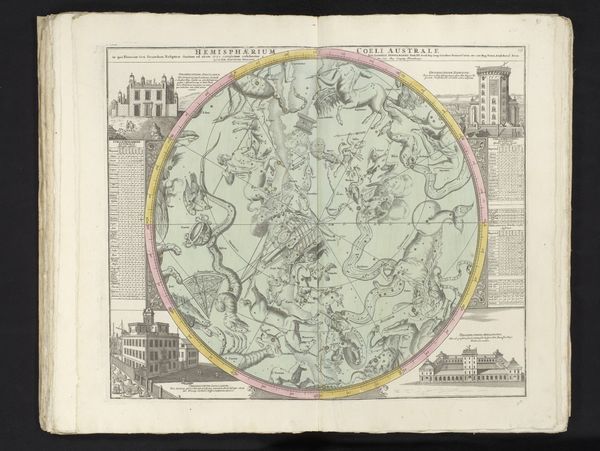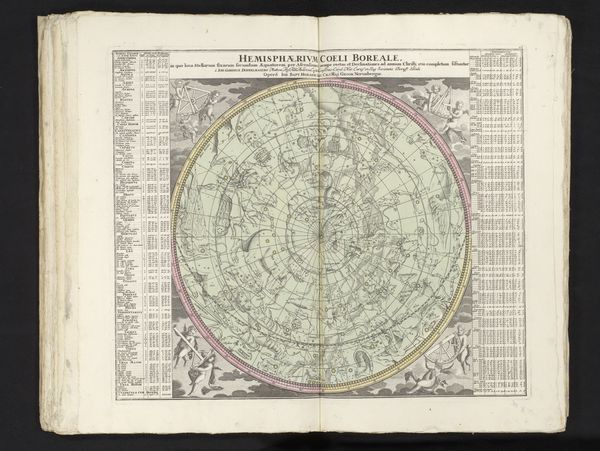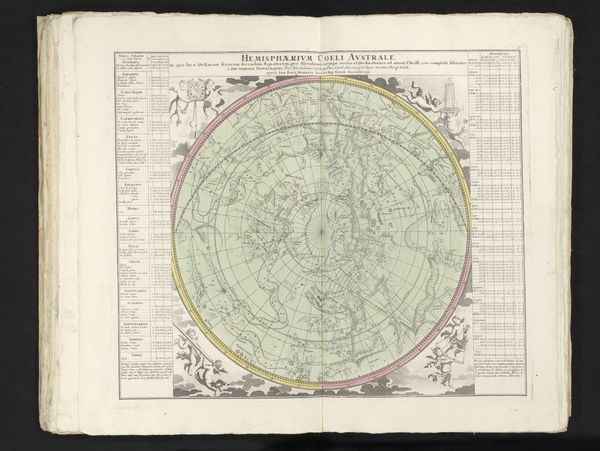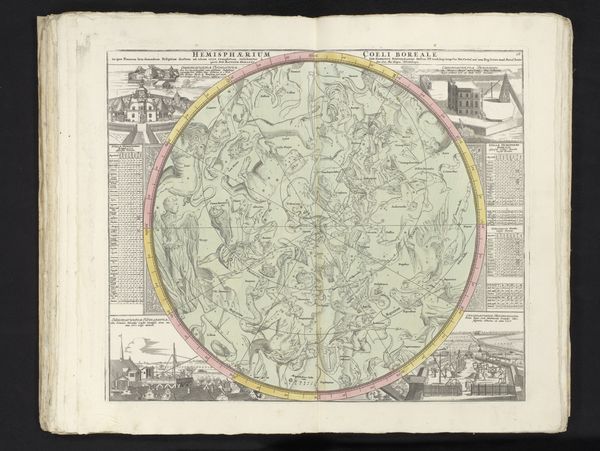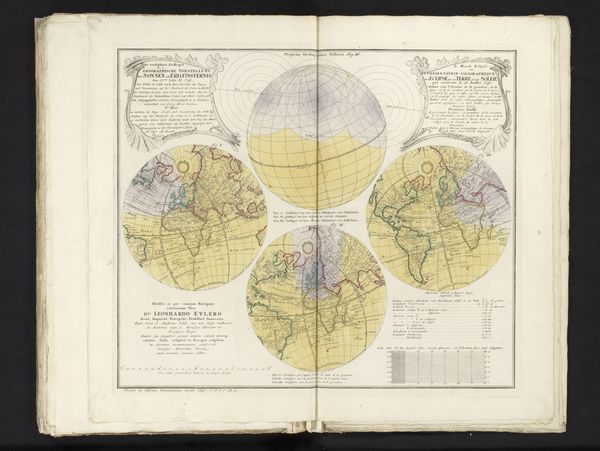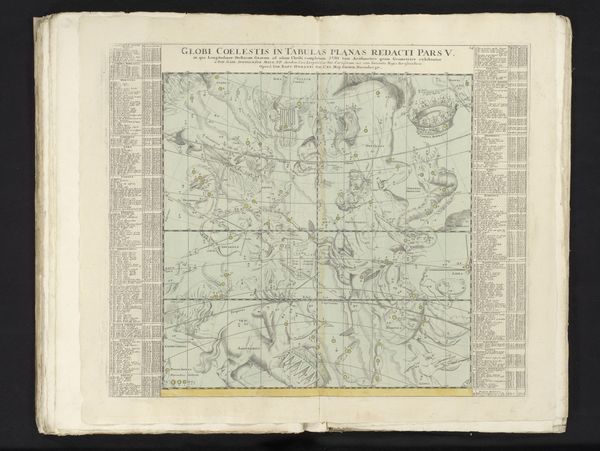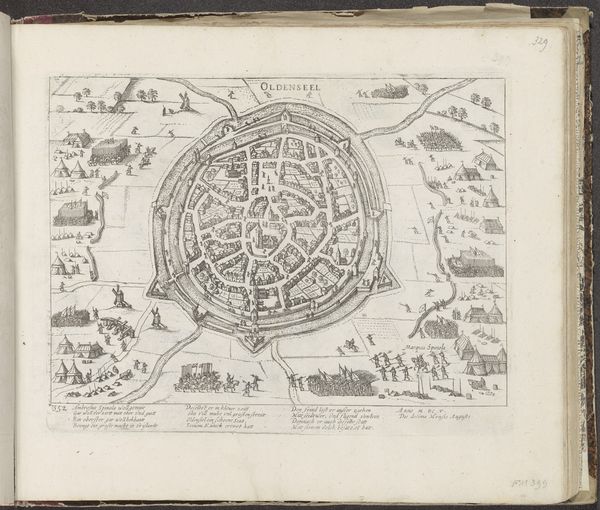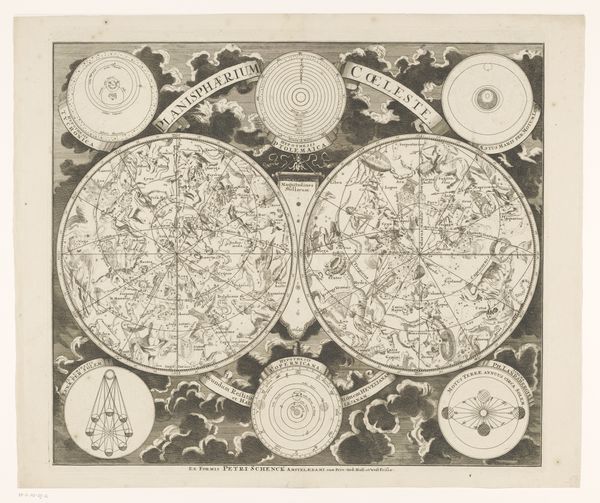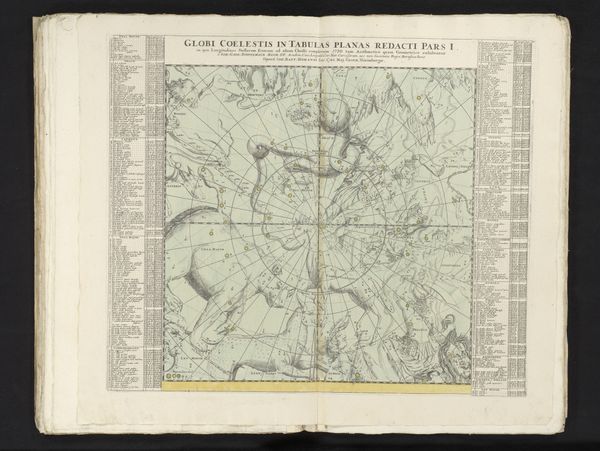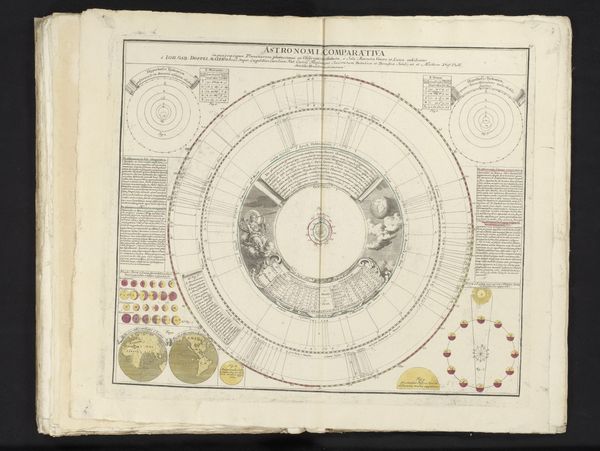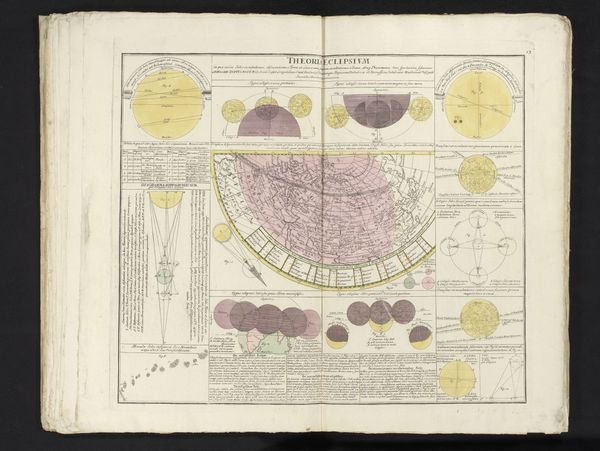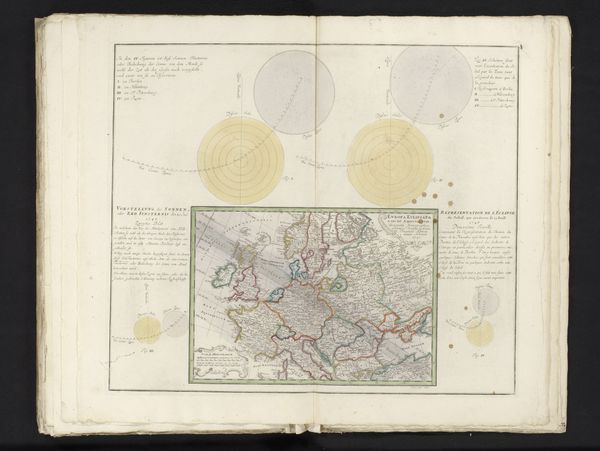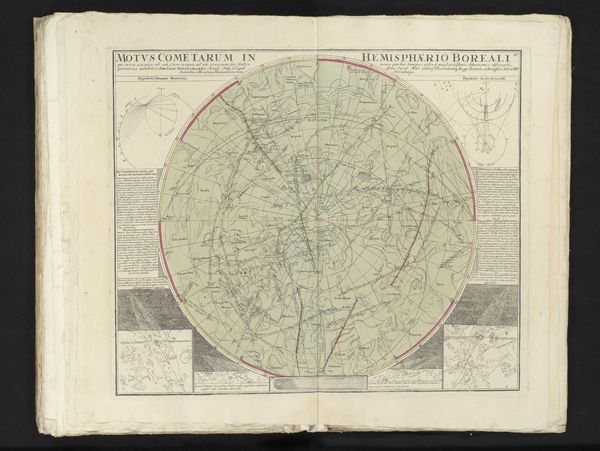
print, paper, engraving
#
baroque
# print
#
paper
#
engraving
Dimensions: height 491 mm, width 567 mm
Copyright: Rijks Museum: Open Domain
Editor: This print, titled "Hemelkaart met de noordelijke en zuidelijke sterrenbeelden," a star chart of northern and southern constellations, dates back to 1707. It's an engraving on paper. I'm struck by the sheer number of stars plotted, and how the two hemispheres dominate the page. What can you tell me about this piece? Curator: I see a fascinating interplay between scientific aspiration and material reality. Consider the paper itself, likely handmade, the inks carefully mixed, the engraving process a laborious undertaking. How does the inherent physicality of these materials—their origin in the earth, the craftsperson's touch—complicate the seemingly objective representation of the cosmos? Editor: That’s an interesting perspective. It seems so…calculated, not something really physical. Curator: Exactly! This print, like all maps, isn’t a neutral reflection of reality. The act of engraving itself—the labor, the skill required, the transfer of an idea onto a copper plate, then onto paper—shapes the final image. Who would have been the consumers of such maps? What kind of access to astronomical data did they have? Were they produced as tools of navigation and power? Editor: Probably used for both I guess. How does knowing the consumers help to understand the work? Curator: Thinking about the users, such as navigators, traders, scientists or perhaps wealthy amateurs, changes our view, the materials become key: durability for those at sea; quality for the wealthy; up-to-date accuracy for scientific and economic benefits. It highlights the relationship between knowledge, materiality, and social function. This helps situate the print within its cultural and economic context, beyond simply a representation of the stars. Editor: I hadn't really considered how much labor was involved in creating what seems like a straightforward star map. Thanks, I'll think differently now when I look at prints! Curator: The real value is seeing that an object of art such as this one, embodies not just an idea, but real physical, social and economic processes as well.
Comments
No comments
Be the first to comment and join the conversation on the ultimate creative platform.
